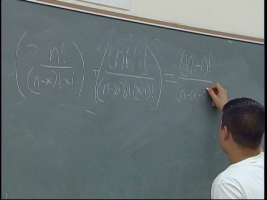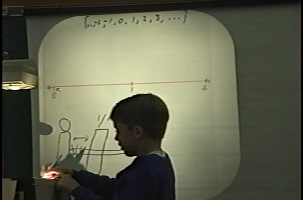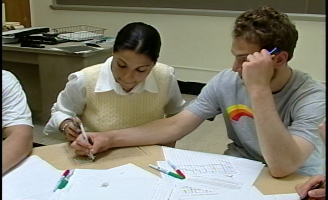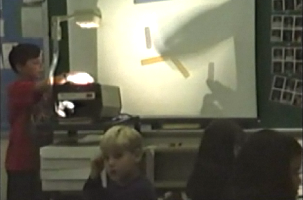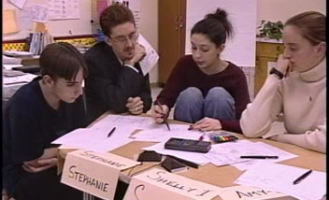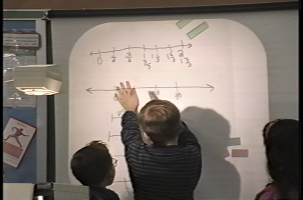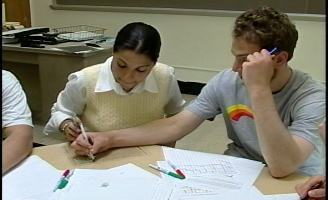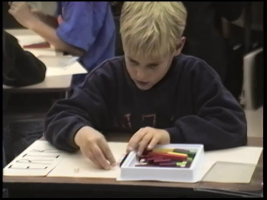Home
Video Mosaic Collaborative
Search Video Mosaic Collaborative
- Browse
- Help
About the Collection
The Robert B. Davis Institute for Learning Collection of 300+ videos (100+ hours) consists of observational videos of students learning mathematical concepts. The videos were captured through a series of research projects studying the same student sample, from first grade through high school, 1992 to the present. The collection consists of video clips edited to highlight evidence of student reasoning and effective teaching practices as well as raw footage suitable for education and child development research. Additional video from 1,350 hours of raw footage continue to be added to this unique and growing collection. 30+ dissertations, 50+ articles and two books, with two additional books in production have resulted from research using this collection. Teaching principles modeled in the studies promote independent thinking and reasoning by students.
Community
The Video Mosaic Collaborative is a virtual community of practice open to researchers in education, child development and complementary specialties, as well as to teacher educators and pre-service and in-service mathematics teachers. The VMC members use the RUAnalytic tool to excerpt, annotate and analyze the longitudinal video data of the VMC collection. The RUAnalytic tool enables participants to create analytics-edited and annotated video clips that explore the many ways students develop reasoning and critical thinking skills. Learn more about the RUAnalytic Tool.
If you want to join, please first read the VMC Community Code of Conduct. You are required to abide by all the terms and conditions of the VMC Community Code of Conduct.
Then complete the VMC Community application form. Participation is limited to those engaged in educational research, training and practice but this covers a wide range of participants, including education faculty, government employees, professional education service providers and K12 educators. Please join us!
Published Analytics
Analytics represent a unique form of publication that integrates research data (observational videos) with the analysis and interpretation more commonly found in journal articles, dissertations and books. More...
Mission
The Video Mosaic Collaborative (VMC) is an interactive collaboration portal designed to enable researchers, teacher educators, and teachers to analyze and utilize real classroom videos shot over a span of 20+ years to make new discoveries in math education and transform mathematics research, teaching and learning. The VMC collection is unique in its longitudinal emphasis on the same student cohorts across a range of school systems from grades 1-12, making it ideal for studying how students develop mathematical reasoning skills over time, as well for modeling principles of effective teaching to elicit student learning as demonstrated by the expert researchers and teachers in these unrehearsed teaching events in the classroom and after school settings.
VMC, an NSF grant-funded initiative, tests the hypothesis that interventions utilizing videos and collaborative tools are more effective than comparably designed interventions without these components.
Research Stories
Studying Students
Romina's Story
What does mathematical reasoning look like? How do we listen for a convincing argument? As a middle school teacher in New Jersey, I am immersed daily in the development of my students' mathematical ideas.
Teaching Teachers
Judy's Story
I began my forty-year career in education as a middle school math teacher. When I briefly took time to stay home and raise my children, I co-authored two math workbooks for McGraw Hill and taught developmental math and math education courses to undergraduate and graduate students at Rutgers University.
Audience
The audience for the VMC is wide ranging, but focuses on researchers, teacher educators and practicing teachers.
The interactive and collaborative nature of the VMC allows researchers to craft new teaching methods and to make new discoveries about student learning while enabling practicing teachers and teacher educators to use and construct interventions for classes, individual students and other scenarios. The videos themselves demonstrate the effectiveness of the teaching techniques and tools used to elicit student reasoning. Many methods and techniques are modeled multiple times across different schools and grade levels. Teacher educators and practicing teachers can use these videos to develop lesson plans and learning scenarios with minimal risk and a high probability of success.
This project is supported by the National Science Foundation through grant awards #DRL-0822204 and #IIS-1217087.
The views expressed here are those of the participating researchers and not necessarily those of the NSF.
